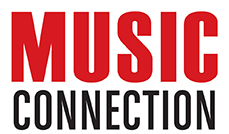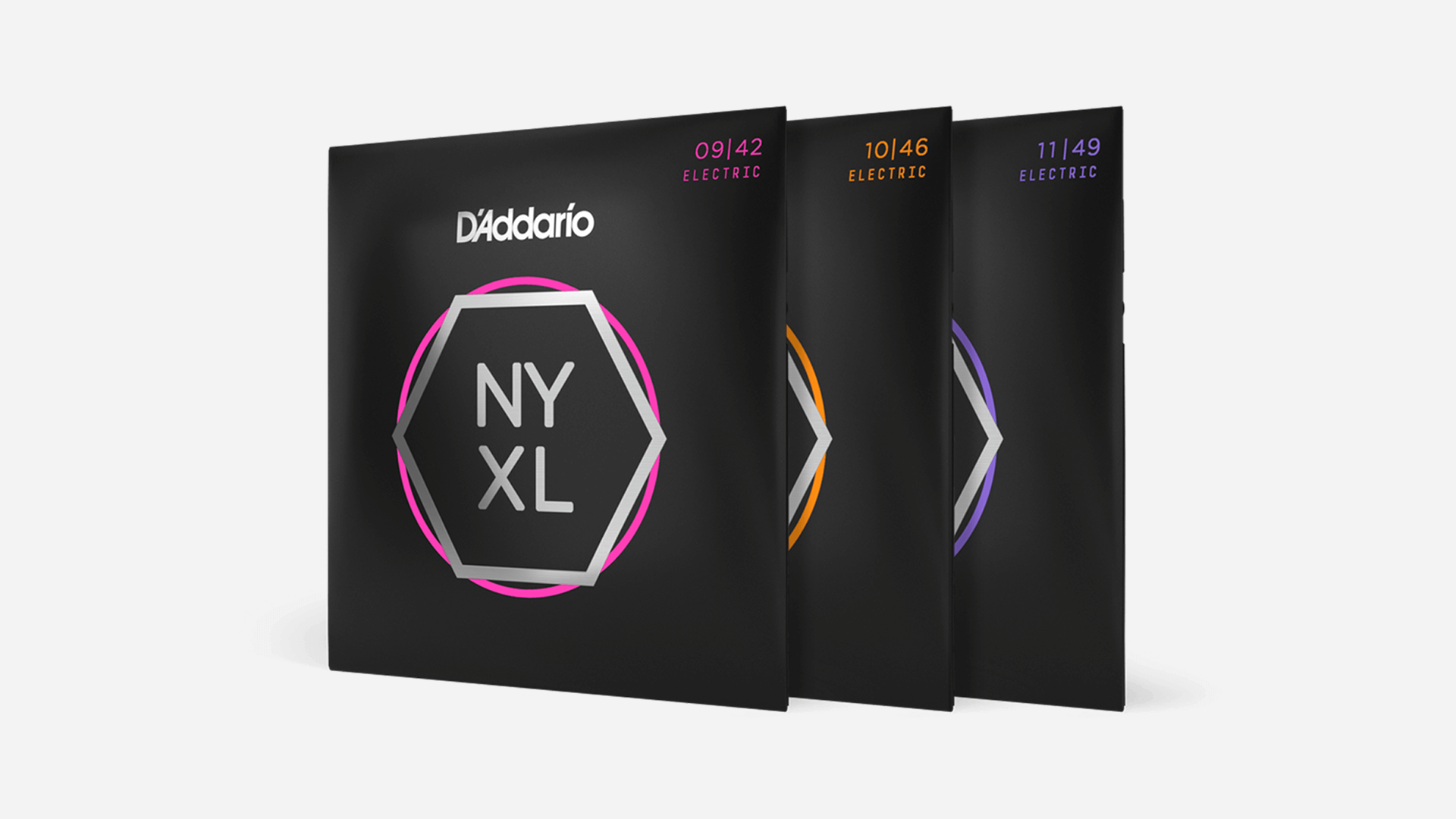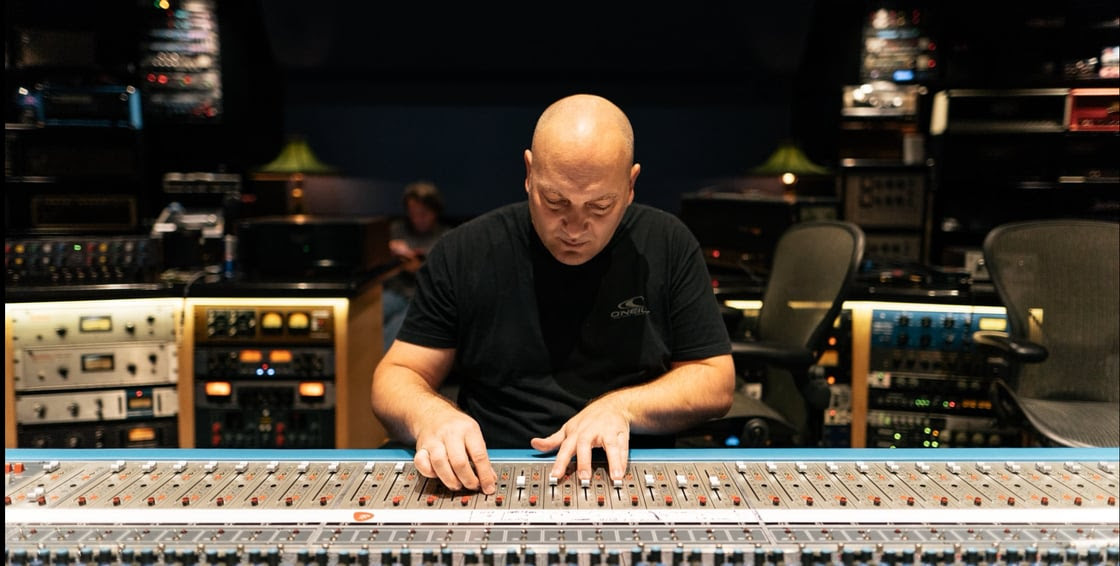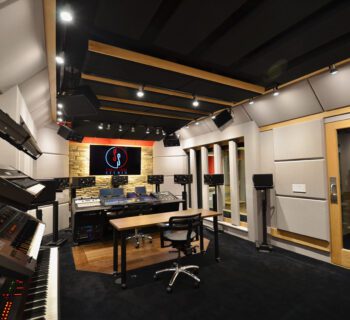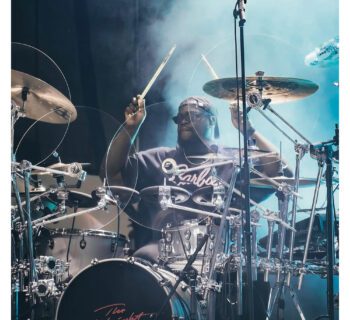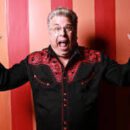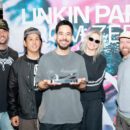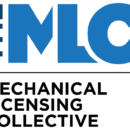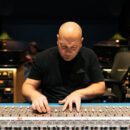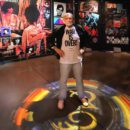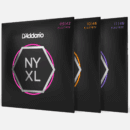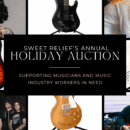With the late November Anthology Collection audio releases, the Beatles Anthology documentary series on Disney+ debuting November 26th, and the re-publication of The Beatles Anthology book, I interviewed award-winning graphic designer, visual artist, documentary producer and director, the London-born John Kosh, who was the creative director of Apple Corps, Ltd. for the Beatles and art director and album cover designer for Abbey Road and Let It Be.
The British Post Office (Royal Mail) in 2009 issued commemorative stamps recognizing the Beatles and their LP covers. Two of them were by Kosh: Abbey Road and Let It Be.
Listening to Kosh reminisce about his November 1968-1971 Apple Records stint and collaborating with the John Lennon and Yoko Ono, the Beatles and Apple recording artists, is like hearing new unheard first-hand dispatches from the playing field and inside the dugout about the Los Angeles Dodgers baseball teams in the 2024 and 2025 World Series.
Kosh has been in your record collection for decades. He was involved with the art work and album covers for the Rolling Stones’ Get Yer Ya-Ya’s Out! and Through the Past, Darkly, (Big Hits Vol. 2)
He designed Who’s Next, Rod Stewart’s Atlantic Crossing, the logo and cover of the Eagles’ Hotel California and the Impressions’ The Vintage Years.
Over the last half century Kosh’s work has also graced covers and recorded music packages from Donovan, Carole King, Bob Dyan, the Motels, Aerosmith, the Moody Blues, Humble Pie, Bob Seger, Bonnie Riatt, Marvin Gaye, Electric Light Orchestra, Ike and Tina Turner, and Marc Bolan and T-Rex.
Kosh has received seven Grammy nominations and won three for his work with Linda Ronstadt.
John Kosh first met John Lennon and Yoko Ono in November 1968, at Room 1, Second West Ward, Queen Charlotte's Hospital, London. He was working at Art & Artists magazine. Kosh bonded with the dynamic duo during his 1968-1971 work at Apple.
In November 2025 I conducted a Zoom interview with Los Angeles-based John Kosh.
Q: You were at Yoko Ono’s exhibition called Cut Piece in September 1966 at Africa Centre in Covent Garden 12 and for Yoko’s exhibit Unfinished Paintings and Objects November 1966. This is where John Lennon met Yoko Ono. You attended John Lennon’s art show You Are Here July 1968 at Robert Fraser Gallery. You had just married Marjory Allen MacGregor on January 1, 1968.
You then get a phone call from John Lennon, thinking it’s a prank. He asks you to meet him at Queen Charlotte’s Hospital.
A: In November 1968, one evening I am at home, the phone rang, “this is Mr. Lennon. Can I speak to Mr. Kosh.” “Yes.” I didn’t think it was him because I was dealing with a lot of avant garde artists my age. And they were crazy people. Fake Liverpool accents. The whole thing. And then he said he really needed to talk about a project could I come and visit him. No mention of Yoko yet. They were at the Queen Charlotte’s Hospital in Hammersmith, London [on November 21, 1968]. I thought “this is a very funny venue.” I didn’t know she had suffered a miscarriage. It was pissing rain outside and he asked if I could come immediately.
So, I got into my Corvette and off I went. I got to the hospital and was asked to ask for a Mr. Winston. When I asked for Mr. Winston, I was shown an elevator and pressed the button to the second or third floor, the door opened and fuck, there was John Lennon. He said in his Scouse accent, “come on in. Let’s have a cup of tea.” There was Yoko in bed with John.
He brought me in because he liked what I was doing for Art and Artists magazine. My minimal style which was to get a message across for Christmas. War is over if you want it. I decided it had to be very stark and having done research, I found a placard with the word Japan Surrendered. I presented it. Yoko and I would talk conceptual things. Ritchie Yorke suggested we do a poster campaign. And that is how it evolved. Ritchie knew it would be plastered all over the world.
It was for a flexi disc of the avant-garde music that they were recording in the hospital. It later appeared on the album Unfinished Music No. 2: Life With The Lions.
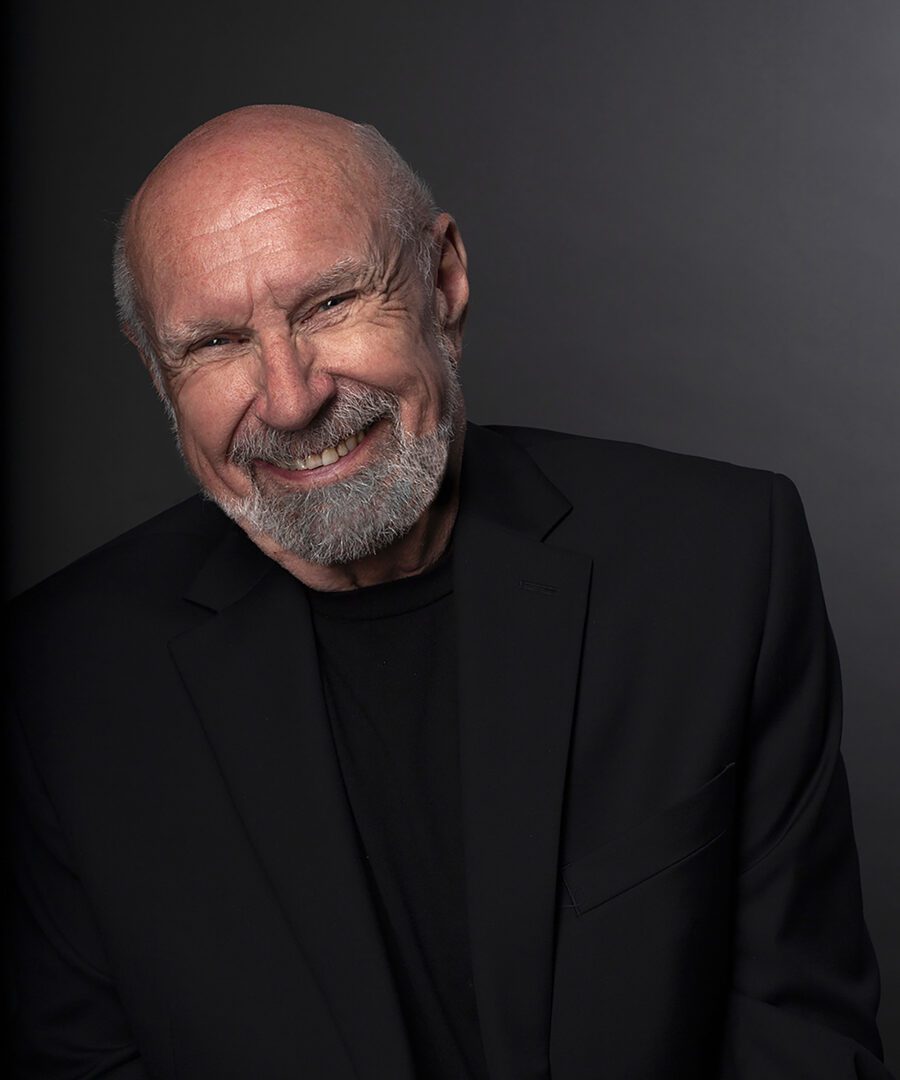
We bond over minimalism and we made a connection. Not only were we creating art we were taking the piss out of art as well. A great balance. Life With Lions was the follow-up to Unfinished Music No 1: Two Virgins.
My first impression of John was that I thought he was much taller in photographs. It wasn’t apparent until much later how this was all evolving. Yes, he was shedding his skin of the Beatles, and don’t forget, he was on a micro biotic diet and thin as a rail. And Yoko trying not to miscarry. So, the whole scene in there was really strange and I had to lift the mood up. And John has a fine sense of humor, a caustic and wicked sense of humor. And “go find myself a desk at Apple.” The atmosphere in there was joyous and hard work.
Q: You knew Derek Taylor at Apple. I met him when I wrote for Melody Maker. He was working for Warner Bros. Records in the seventies after his 1968-1970 Apple tenure.
A: Derek Taylor, Lovely man. An exceptional writer. A great publicist with artist promotions. He started out with The Daily Express. Can you imagine editorial taking his work these days?
He referred to all the big record labels at the time, like EMI. As “burly conglomerates.” And Decca/London. Now I’m thinking, ‘Yeah, he’s right!” He was charming, and what is more, insistent. He would be charming and would absolutely agree with him. “Yes, you are right. We will do it.”
At this point, Peter Brown was trying to be the manager, and Ron Kass had been brought in to head Apple in 1968. I was actually working for Joan Collins who he was married to. It’s all tied up together.
I started out on the ground floor in Kass’ old office until Lennon asked me to move because he wanted the office.And the funny thing was when I walked in there was my old school mate Jack Oliver. In 1967, Jack joined Apple, and worked in their music publishing division and managed Mary Hopkin. Peter Asher was there with James Taylor. Engineers like Ken Scott and Geoff Emerick were around.
Tony Bramwell was always at Apple. He was like the joint head of Apple. A man about town and close with Jack Oliver. Mal Evans was at Apple. He just seemed to be the gentle giant wondering around. He helped me with management when it came to Badfinger. He was always pleasant. Plus, Richard DeLello, who wrote The Longest Cocktail Party.
There was no art studio. I used to do a lot of the design work at night. Derek was very helpful in clearing the path for me. And never in a condescending way, either.
Q: Abbey Road album was completed on August 20, 1969, and released September 26, 1969.
A: John walked into Apple with an acetate of Abbey Road from the lathe down in the basement and everything stopped.
I ended up on the second floor with Derek Tayor. One day I was going to do some stationary for Derek pro bono. He said, “Wait for a minute.” And Ringo walked in and then Peter Brown sat down.
John walked in and said, “Listen to this, kids.” He had two acetates of Abbey Road andhe put on side 1 on the turntable. “Come Together.” I could not believe it. And the sound system in Derek’s office was pretty damn good. Speakers the size of refrigerators. By the time I heard “I Want You (She’s So Heavy),” I kind of lost it. We were one of the first civilians to hear Abbey Road.
I don’t want to give the impression we were all stoned at Apple. Sure, you’d share a joint on occasion, but some of the type I am handling is 6 point type. No computers. You had to use a magnifying glass. I had George’s glasses at one point. But it was cut and paste. I still have scars on my thumbs. Everyone in that place was dedicated to turning out, here we go again, “product.”
The whole Abbey Road thing was a rush job. I was working on other projects. And all of a sudden, it was like, “Okay, these are the photographs, we need an album cover!” As far as Abbey Road, Iain Macmillan the photographer had 6 frames from the zebra crossing and they chose the photo at Jack Oliver’s office on the ground floor. It was really a publicity photo. There was only one that seemed to work.
Him and I were really thinking this is not a Beatles cover. Not good enough. Not realizing it would become an icon. We had to go with it because there was no time to change it. Let It Be was on the shelf. I did finish that book.
Abbey Road is in the light box and transparencies Iain and I are going over all of the frames. George Harrison comes over, such a sweet man, and we say “we think this is the best one.” He agreed. “That’s the best one.”
It was very unusual for a Beatle to come to the office before 3 in the afternoon. Then Neil Aspinall came in and said “if George likes it, we like it.” The back cover… There is an empty space with the track listing and a girl is walking by.
Sir Joseph Lockwood, the chairman of Apple Records’ parent company EMI called me up in the middle of the night at 3:00 am and said “the name of the group isn’t on the front cover. We’re never going to sell any records!” He said “I was ruining the Beatles’ careers!” He was only thinking of where records would be out in the racks and bins.
I was a 23-year-old and my knees and body were trembling. I knew it didn’t need an explanation. I thought, “Here are the four Beatles walking across the street. If you do not know who they are, you have definitely been in a cave somewhere.” There was a lot of publicity about the new album by the Beatles coming out. They were the Fab Four. I went away and wasn’t looking again, and somebody at EMI insisted that the name of the Beatles was on the back cover. I thought that was silly.
I then told George the story about the front cover. George said, “Oh forget it. We're the Beatles.” No more discussion after that.
Apple sent me a 300 pound check for that cover. It was signed by John Lennon and Paul McCartney. What did I do? I had to pay the rent and I cashed it.
The fact that Abbey Road became the icon that it is never occurred to me. Iain and I were thinking this is the weakest cover of the Beatles yet. And it turns out to be the strongest for different reasons. By sheer serendipity it was there. Parodies of the cover happened. I never envisioned this.
Q: What was vibe like at the Apple offices?
A: Being around the Beatles at Apple…Paul would turn up in a bus. The Radha Kirshna temple were supplying food before the kitchen had started. People would arrive around 10 am and the work until 10 at night. And we never missed a deadline. Everything worked like clockwork.
The reason I fitted is that nobody there understood print. I had done 5-6 years at the British Printing Corporation learning about how to prepare art to get it printed, and not cost a fuckin’ fortune to repair if it was wrong in the middle. All of a sudden, I made myself, appointed myself the creative director. So, anything that got printed would come to me. And anything designed for print would come to me.
A lot of ska, bluebeat and reggae music was played in the office. Different floors at Apple had different types of music. It depended where you were.
Paul was still doing his cute stuff. Everyone had names in there. Paulie, Ritchie, Lenny and Georgie. When I first walked in Beatles showing up was a rare event, you know. John was always there I guess because he was with Yoko at the end office. Ringo was out a lot making movies like Magic Christian. George was rather involved with The Radha Krsna Temple. He’d actually come up to you and say “Hey Koshy. Hare Krishna.” And then he started calling me Johnny.
Q: You were invited to attend the recording session of “The Ballad of John and Yoko.”
A: At Abbey Road. Studio 2 or B, and it’s the one where Ringo’s drum set was permanently set up. There was a grand piano. I walked in and [engineer] Geoff Emerick was on the board. It’s the first stereo single in the UK. Sitting on the rostrum behind Ringo’s kit was Paul with brushes. Sitting in front of him was John with his 12-string. Not really playing it just messing with it. And under the grand piano is Yoko Ono. And what is going on is that John and Paul are not supposed to be speaking with each other, you know.
There is a whole rift that has torn them apart. There is the John Eastman camp with Paul, and the Klein camp with John. They are not supposed to be communicating, and the press have been told they are hating each other. And here are these guys right in front of me having a lot of fun. They are enjoying themselves and are funny. I walk in and they take the piss out of me, right. “You’re late!”
It was my first trip into Abbey Road. George and Ringo are not on the session. George was out of the country and Ringo was filming The Magic Christian. John did the lead vocal, lead guitar and acoustic guitar and percussion. Paul is on bass, drums, piano, percussion [maracas] and sings vocal harmony. It’s a song about the wedding of John and Yoko in March 1969. I show the single sleeve art to them. “Fine. Great. Fuck off. We’re working.” And I walked out. And I thought this is nothing like the press have reported. And I said to Derek, “what happened?” “Let’s keep it quiet. Shut up.” (laughs).
Q: “The Ballad of John and Yoko” by The Beatles was issued as a single on May 30, 1969. It chronicles the events of their wedding and honeymoon. This was followed by “Give Peace A Chance” single that was released July 4, 1969, both designed by you.
A: John realized I was doing something dramatic with War is Over and trying to make things very legible. George walked in and saw the 32 page sheet on the floor of Let It Be, and initially couldn’t get the concept they would be folded and cut into a book. But he was interested. John would say “you know what you are doing.” I had a really good relationship with him.
This is a retail world where picture sleeves are involved. There was a lot of work being done. Badfinger, Mary Hopkins, Billy Preston, and MJQ. I didn’t actually do that cover. I just rescued it.
They didn’t know how to send it to the printer. I had a 1 to 1 communication with the Apple principals and the Beatles.
It’s a different world now with middle management. And I’ll tell you something else which is shocking: I never signed a contract in my life. The merger of the text and visual. We were commercial artists, let’s face it, to use the dirty word. It has been elevated to an art form. The whole point is readability, legibility and whatever else. And my theory is if you are going to design an album cover, poster on the side of a bus, you are gonna get the message. If you don’t get the message, you failed. So, you integrate. At Apple I was multi-tasking but it was easy. (laughs).
Q: The rooftop concert on January 30, 1969, at Apple Corps headquarters. You begin work on the Get Back book and cover with Ethan Russell’s photos from a January 1969 shoot. On May 8, 1970, the Let it Be final Beatles album and documentary film, directed by Michael Lindsay-Hogg, and you designed the movie poster.
A: I wasn’t on salary and had no benefits. I billed as I went along. Which is why I managed to end up on the roof, ‘cause staff were not allowed to end up on the roof for it. ‘Cause I was actually ferrying messages from down in the basement to Kevin Harrington [Beatles equipment manager] who was holding up the lyrics.
Q: You had some real reservations about the 1970 movie.
A: Let It Be is totally wrong. It was very light, not dark. Everyone was working hard, having a lot of fun admittedly. To tell you the truth I was appalled when I saw the premiere. It was grim and I left the screening early. ‘Cause I thought this is not how I remember the whole experience. I never saw the bickering. I never saw the moodiness in my bubble. And even though I knew the Beatles were breaking up it was pretty obvious, even so, this is a really successful record company.
Look at the list of hits and records that came out. They were on a roll. The atmosphere that was portrayed in the movie was down and nothing like what I remember. Even downstairs in the studio. How could the environment be so down with Billy Preston there? Billy was wonderful always jumping up and down all the time running up and down the stairs. And so, when I first saw Let It Be I was very disappointed.
With the Disney The Beatles: Get Back three-part documentary series I felt vindicated in some respects. “That’s how I remember it!” Now with hindsight. So, I actually waited for it and thrilled to hear John mention my name in it. I thought something was missing in Let It Be. And in this one they fulfilled it. Why it had to take so long I don’t know.
Today, the bands became brands. Merchandise was coming in in the sixties. But what is getting on my nerves is now we’re re-mixing and re-mastering. It is not the way we initially heard them and loved them.
Q: You relocated to California in 1973.
A: I owe a lot to Peter Asher. When I first came to the States, to California, I couldn’t break into the click. I was the new kid in town. Peter said “Do Linda Ronstadt,” and then he said to [Irving] Azoff, “give him the Eagles for Hotel California.”
John Kosh currently lives and works in Los Angeles with partner, wardrobe stylist and writer, Genevieve Schorr. He has one son, John Kosh Jr. (born in London) in 1971.
(Harvey Kubernik met the four Beatles and interviewed three of them. He is the author of 20 books, including 2009’s Canyon Of Dreams: The Magic And The Music Of Laurel Canyon, 2014’s Turn Up The Radio! Rock, Pop and Roll In Los Angeles 1956-1972, 2015's Every Body Knows: Leonard Cohen, 2016's Heart of Gold Neil Young and 2017's 1967: A Complete Rock Music History of the Summer of Love. Sterling/Barnes and Noble in 2018 published Harvey and Kenneth Kubernik’s The Story Of The Band: From Big Pink To The Last Waltz. In 2021 the duo wrote Jimi Hendrix: Voodoo Child for Sterling/Barnes and Noble.
Otherworld Cottage Industries in 2020 published Harvey’s Docs That Rock, Music That Matters. His Screen Gems: (Pop Music Documentaries and Rock ‘n’ Roll TV Scenes) is scheduled for an early 2026 publication.
Harvey Kubernik wrote the liner notes to CD re-releases of Carole King’s Tapestry, The Essential Carole King, Allen Ginsberg’s Kaddish, Elvis Presley The ’68 Comeback Special, The Ramones’ End of the Century and Big Brother & the Holding Company Captured Live at The Monterey International Pop Festival.
During 2006 Kubernik appeared at the special hearings by The Library of Congress in Hollywood, California, discussing archiving practices and audiotape preservation. In 2017 he lectured at the Rock and Roll Hall of Fame in Cleveland, Ohio, in their Distinguished Speakers Series. Amidst 2023, Harvey spoke at The Grammy Museum in Los Angeles, California discussing director Martin Scorsese's The Last Waltz music documentary.
Kubernik is in The Sound of Protest documentarynow airing on the Apple TVOD TV broadcasting service. https://tv.apple.com › us › movie › the-sound-of-protest. Director Siobhan Logue’s endeavor features Smokey Robinson, Hozier, Skin (Skunk Anansie), Two-Tone's Jerry Dammers, Angélique Kidjo, Holly Johnson, David McAlmont, Rhiannon Giddens, and more. Harvey is interviewed along with Iggy Pop, Bruce Johnston, Johnny Echols, the Bangles' Susanna Hoffs and Victoria Peterson, and the founding members of the Seeds in director Neil Norman’s documentary The Seeds - The Seeds: Pushin' Too Hard was released in November 2025, as a DVD/Blu-ray via the GNP Crescendo Company).
Top photo by James Carbone
